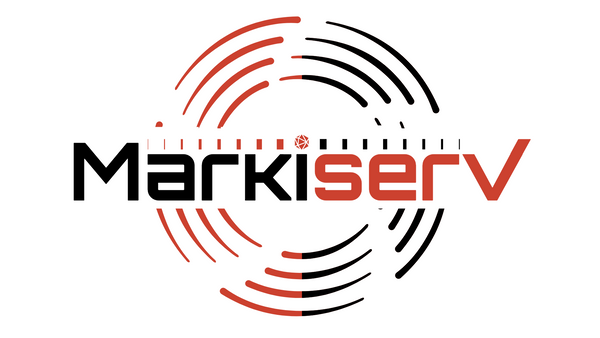
Miniguide: How to Bid on Government Contracts and Prepare for Success
Share
Winning government contracts can be a transformative opportunity for companies seeking stable revenue streams and long-term growth. The government committed a staggering $759 billion dollars to contracts in 2023, making this a huge business opportunity. However, the process of bidding for these contracts and delivering on them once awarded can be daunting without the right strategy. In this guide, we will break down the steps to successfully bid on government contracts, prepare for execution, and highlight the critical role of marketing and graphic design in standing out from the competition.
If you would like a longer guide please click here.
Understanding the Basics of Government Contracting
1. What Are Government Contracts?
Government contracts are agreements between businesses and federal, state, or local governments to provide goods or services. These contracts cover a wide range of industries, including construction, IT services, defense, and more.
2. Why Pursue Government Contracts?
Government contracts offer consistent and often lucrative opportunities, as governments prioritize reliable vendors for long-term projects. Additionally, small businesses, minority-owned businesses, and other disadvantaged groups may benefit from set-aside contracts.
Step 1: Registering Your Business for Government Contracting
1. Obtain a D-U-N-S Number and Register in SAM
To bid on federal contracts, businesses must first obtain a D-U-N-S number (a unique identifier for your business) and register with the System for Award Management (SAM). This registration ensures eligibility and allows you to search for contract opportunities.
2. Explore Certifications
Certain certifications, like Woman-Owned Small Business (WOSB) or Service-Disabled Veteran-Owned Small Business (SDVOSB), can make your business eligible for exclusive contract opportunities. Research which certifications apply to your company.
3. Research Relevant NAICS Codes
The North American Industry Classification System (NAICS) assigns codes to industries, helping the government identify vendors. Choose codes that match your business’s expertise.
Step 2: Finding Contract Opportunities
1. Use Federal Databases
Federal contracts are typically listed on databases like:
- SAM.gov: The official source for federal contract opportunities.
- Dynamic Small Business Search (DSBS): Useful for small businesses.
- FedBizOpps.gov (now merged with SAM): Another hub for finding contracts.
2. Monitor State and Local Opportunities
Many state and local governments have their own bidding platforms. Regularly check relevant websites and subscribe to alerts for updates.
3. Network and Build Relationships
Networking with government agencies and attending industry-specific events can help you learn about upcoming contracts. Joining associations like the National Association of Government Contractors (NAGC) can also boost visibility.
Step 3: Writing a Winning Proposal
1. Understand the Solicitation Requirements
Carefully review the Request for Proposal (RFP) or Invitation for Bid (IFB). These documents outline the scope of work, evaluation criteria, and submission requirements. Address every detail thoroughly.
2. Showcase Expertise and Value
Highlight your company’s unique strengths, past performance, and qualifications. Use quantitative data and case studies to demonstrate your ability to deliver.
3. Ensure Professionalism in Presentation
A polished, well-designed proposal can make a lasting impression. Include:
- Clear, concise language.
- Professionally designed graphics, charts, and tables.
- Brand-consistent visual elements.
4. Double-Check for Compliance
Ensure your proposal complies with all submission requirements, including formatting, deadlines, and necessary attachments. Failure to meet these can result in disqualification.
Step 4: Preparing for Execution Once You Win
Winning a government contract is just the beginning. Delivering high-quality work is crucial to building trust and securing future opportunities.
1. Assign a Dedicated Team
Appoint a project manager and team members to oversee contract execution. Define roles, responsibilities, and timelines early to ensure accountability.
2. Adhere to Compliance Standards
Governments often have strict compliance and reporting requirements. Familiarize yourself with contract terms and set up systems to track progress and submit reports.
3. Manage Budgets Effectively
Budget management is critical. Monitor expenses closely to ensure you stay within the agreed-upon budget while maintaining quality standards.
4. Communicate Regularly with Stakeholders
Maintain open lines of communication with the contracting agency to address any questions or challenges promptly. Clear communication fosters trust and ensures smoother execution.
The Role of Marketing in Government Contracting
Marketing plays a pivotal role in winning and executing government contracts. It helps your business stand out from competitors and build credibility.
1. Brand Your Business for Government Agencies
Tailor your branding to appeal to government buyers. Use consistent messaging that emphasizes reliability, efficiency, and experience in your proposals, website, and marketing materials.
2. Showcase Success Stories
Create case studies highlighting past government or large-scale projects. Use metrics and testimonials to validate your expertise.
3. Use Digital Marketing Channels
Leverage SEO, LinkedIn, and email marketing to promote your capabilities and reach government decision-makers. A professional online presence can reinforce your credibility.
The Importance of Graphic Design in Government Contracting
Graphic design is often overlooked but plays a critical role in government contracting.
1. Enhance Proposal Presentation
Professional design can make your proposal visually appealing and easier to understand. Use infographics, icons, and branded templates to convey complex information effectively.
2. Build Trust with Consistent Branding
Strong branding in all touchpoints, from proposals to your website, communicates professionalism and reliability—qualities government agencies value highly.
3. Create Compelling Marketing Collateral
Design flyers, brochures, and presentations that effectively showcase your capabilities. These materials can be useful at government-focused networking events.
Conclusion: Setting Yourself Up for Success
Winning and executing government contracts requires preparation, strategy, and a commitment to quality. By registering your business, crafting compelling proposals, and emphasizing marketing and design, you can establish your company as a trusted partner for government agencies.
Remember, the process doesn’t end with winning a contract. Delivering excellent results, maintaining compliance, and showcasing your achievements will position your business for continued success in the government contracting space.
Helpful Links to Learn More:
System for Award Management (SAM) - The official portal for government contractors to register and maintain their information.
SAM.gov
Federal Business Opportunities (FBO) - A government portal for federal contracting opportunities.
FBO.gov (Note: This is now part of beta.SAM.gov)
Procurement Technical Assistance Centers (PTACs) - A network of centers providing guidance to businesses seeking government contracts.
PTACs
Marketing to Government Agencies - HubSpot Blog - An article on how to market your business effectively to government agencies.
Marketing to Government Agencies
GovLoop - Government Contracting Resources - Offers a variety of articles, guides, and webinars on contracting with the government.
GovLoop
American Marketing Association (AMA) - Marketing in Government - A resource for understanding how marketing can work within the government sector.
AMA - Marketing in Government
